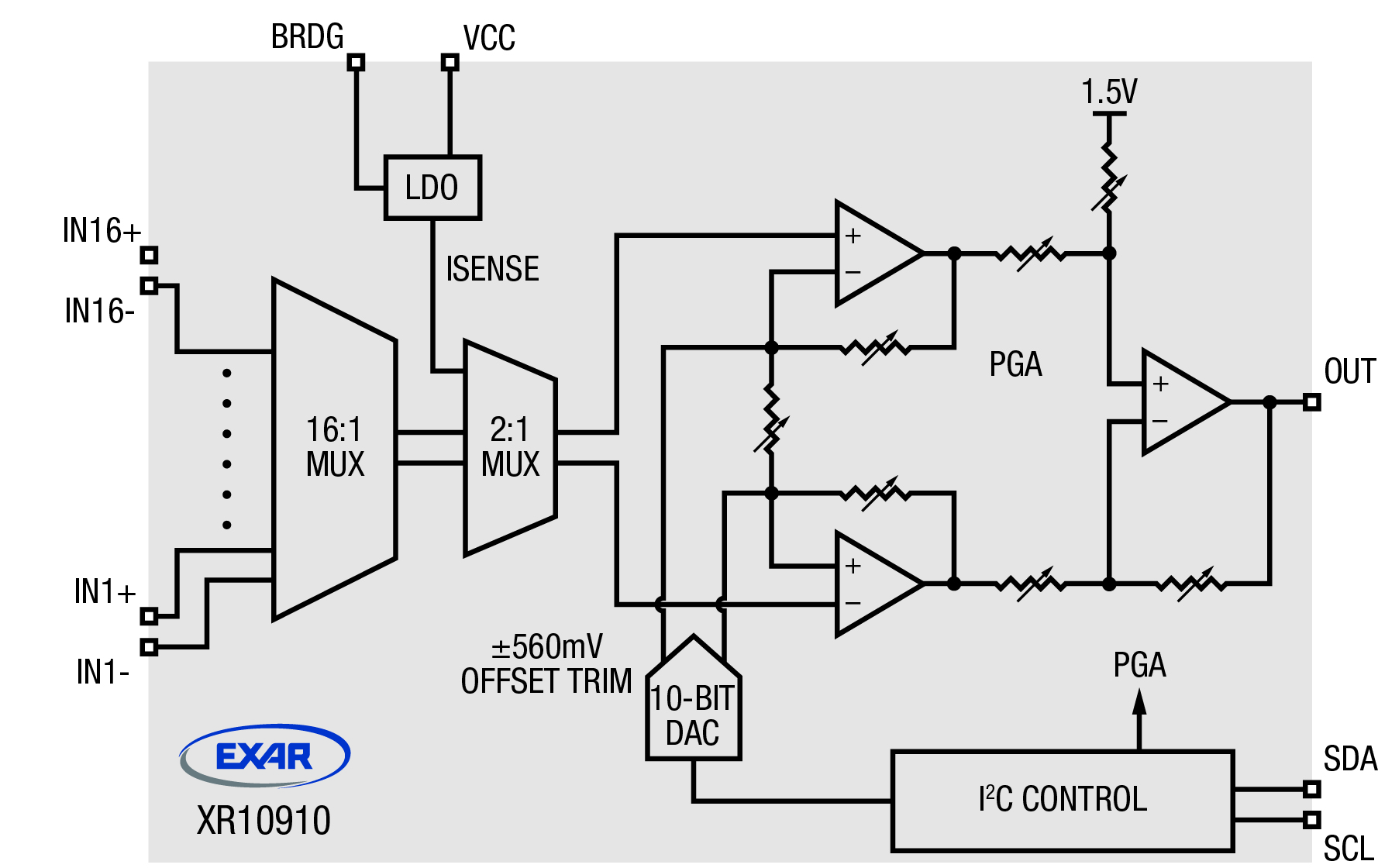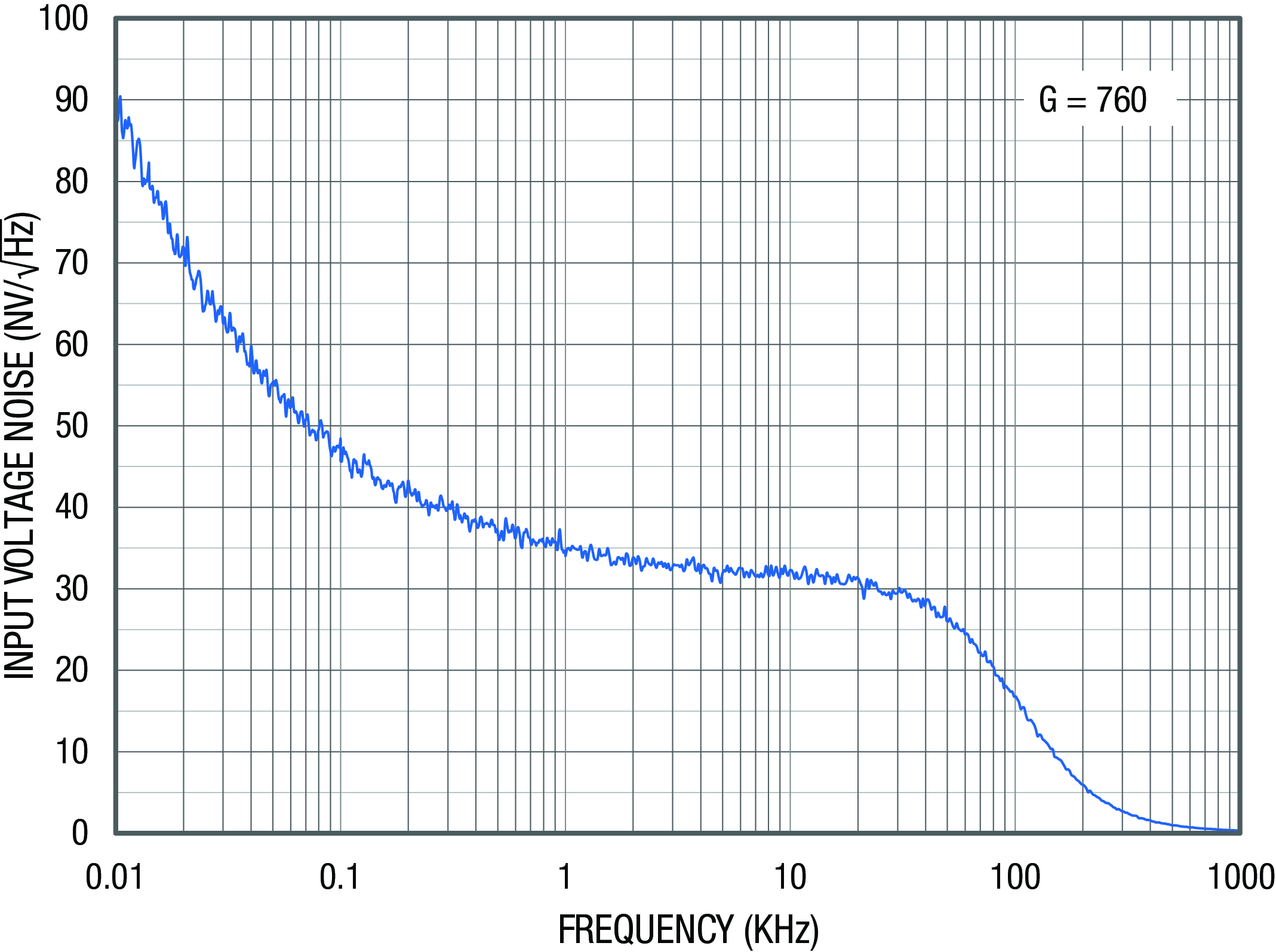Bringing flexibility to the AFE
As sensors proliferate every application, demand for analog front-ends that offer more flexibility and improved features is set to increase. By Debbie Brandenburg, Regional Marketing Manager, Exar Corporation
It’s easy to overlook the fact that the vast amount of data in our increasingly digital world actually starts life as an analog signal; this is particularly true when considering how the Internet of Things is going to change the world, but it’s also relevant when thinking about everyday objects that we already live with. Labour saving devices in the home — from washing machines to vacuum cleaners — all rely on multiple forms of ‘real-world’ data to operate, data that must effectively be moved from the the analog domain to the digital. The more intelligence we build in to such devices, the more real-world information we need to supply, and this trend has led to the development of more sophisticated and sensitive devices able to detect smaller changes in real-world properties, be that pressure, temperature, heat, sound, light or an almost limitless number of variations on fluid flow measurement.
Even before the explosive growth in sensor variation, the fundamental techniques involved have always meant that, at their output, only small electrical signals are generated. Sensors are therefore prone to noise and the methods used to improve signal-to-noise ratios in signal paths have long been the focus of companies making and improving Analog-to-Digital Converters (ADCs). However, as developments in sensor technologies extend not only the range of properties that can be measured but also their resolution, sensor outputs have become even more susceptible to noise. In conjunction with this development is the trend to integrate evermore sensors in to devices, to provide the data needed to enable modern life.
While signal conditioning is a requirement that must extend throughout the signal chain, it starts at the initial sensor interface; the Analog Front End (AFE). Like sensors, the AFE has changed over time, from discrete components to integrated solutions and while for some sensors a discrete solution may still suffice, for the majority of sensors producing very small signals the use of more sophisticated and integrated AFEs has become the norm. Today, there are many variations on the integrated AFE, and many will now offer a level of signal conditioning, analog-to-digital conversion and perhaps some digital signal processing. Often they will be able to interface to several sensors and, depending on the application, provide a level of functionality suitable for a range of different sensor types. However, these highly sophisticated devices can often be expensive and introduce unnecessary features; features that may already be present elsewhere in the system. As such, the additional space, power and cost is unnecessary, particularly when only a simple AFE is required. With a greater amount of variation in sensor technology, it becomes harder to make a simple device that is suitable for a wide range of applications, but this is exactly what Exar has set out to achieve with the XR10910.

Integrated solutions
The XR10910 is an AFE intended to perfectly complement a downstream ADC and MCU/DSP, in a range of existing and emerging applications where multiple sensors generating small signals are used. It achieves this by focusing on the important aspects of a good AFE, and integrating those features in to a single, monolithic device. By integrating a 16:1 differential multiplexor with a Programmable Gain Amplifier (PGA), the XR10910 AFE can interface to 16 differential output sensors and provide a different gain for each channel. The PGA offers eight gain settings; from 2:1 to 760:1. As no two sensors are exactly the same — even if they are supposed to be — the XR10910 can not only apply a different gain to each sensor but, thanks to an integrated Digital-to-Analog Converter (DAC), it can also apply a dedicated offset voltage for each connected sensor. This compensates for sensor variation and is applied to the Instrumentation Amplifier used to calibrate each sensor. Figure 1 shows a block diagram of the device, featuring all of the major functions, including a Low Dropout Regulator (LDO) that can be used to provide a regulated excitation voltage to the system’s sensors.
An example application, illustrated in Figure 2, shows how a single XR10910 can interface to 16 Wheatstone Bridge sensors. This sensor topology, often referred to as a strain gauge, employs four resistive elements which are affected by an external influence (the property being measured). Any external influence causes a change in the resistance across the bridge network. Under steady conditions, there should be no measurable difference between the positive and negative terminals, however due to variations in the sensor’s resistive elements there is often an offset present. An AFE must compensate for this offset if the Wheatstone Bridge is to be useful and, thanks to the XR10910’s onboard DAC, this can be achieved easily for each of the 16 sensors.

As shown in Figure 2, the output of the XR10910 would provide the input to a downstream ADC and, from there, any subsequent signal processing in the digital domain can take place.
The XR10910 offers 14-bit signal path linearity and a low peak-to-peak noise of 2µV at its maximum gain of 760. At the same gain setting, the input voltage noise is just 35nV/√Hz (as shown in Figure 3) and offers a low bias current of 100pA(Max); this allows the AFE to interface to a wide range of sensors and, as it operates from a supply voltage between 1.8V and 5V, it can complement a number of 16-bit ADCs working in the 3V to 5V range. In operation the XR10910 consumes around 457µA, which drops to just 45µA in sleep mode. All of its features are controlled via an I2C bus interface.
Sensors are now being used more extensively in a wider range of end-products, a trend that is set to continue as the IoT takes hold. With smaller signals requiring greater integrity, in low power applications that also incur size restrictions, demand for more flexible AFEs able to interface to more sensors is destined to increase. This is the first in a range of sensor interface products planned by Exar and is unique in the market; it fits between existing discrete solutions and single-chip sensor AFEs that include a processor. Its high channel count and flexible sensor interface circuitry, in a small package offering low power operation, will ensure it will play a critical part in emerging applications.




